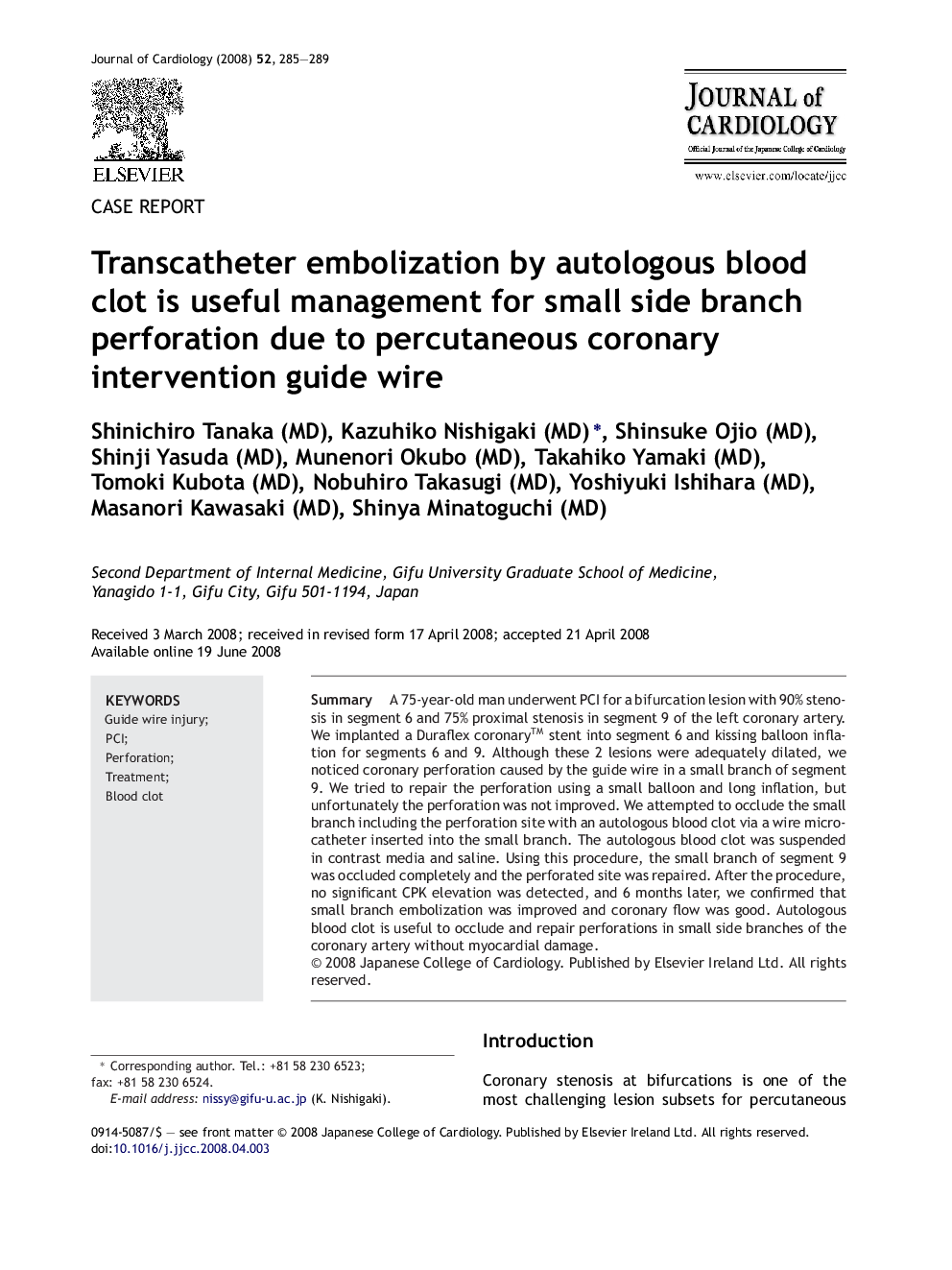| Article ID | Journal | Published Year | Pages | File Type |
|---|---|---|---|---|
| 2963320 | Journal of Cardiology | 2008 | 5 Pages |
SummaryA 75-year-old man underwent PCI for a bifurcation lesion with 90% stenosis in segment 6 and 75% proximal stenosis in segment 9 of the left coronary artery. We implanted a Duraflex coronary™ stent into segment 6 and kissing balloon inflation for segments 6 and 9. Although these 2 lesions were adequately dilated, we noticed coronary perforation caused by the guide wire in a small branch of segment 9. We tried to repair the perforation using a small balloon and long inflation, but unfortunately the perforation was not improved. We attempted to occlude the small branch including the perforation site with an autologous blood clot via a wire microcatheter inserted into the small branch. The autologous blood clot was suspended in contrast media and saline. Using this procedure, the small branch of segment 9 was occluded completely and the perforated site was repaired. After the procedure, no significant CPK elevation was detected, and 6 months later, we confirmed that small branch embolization was improved and coronary flow was good. Autologous blood clot is useful to occlude and repair perforations in small side branches of the coronary artery without myocardial damage.
